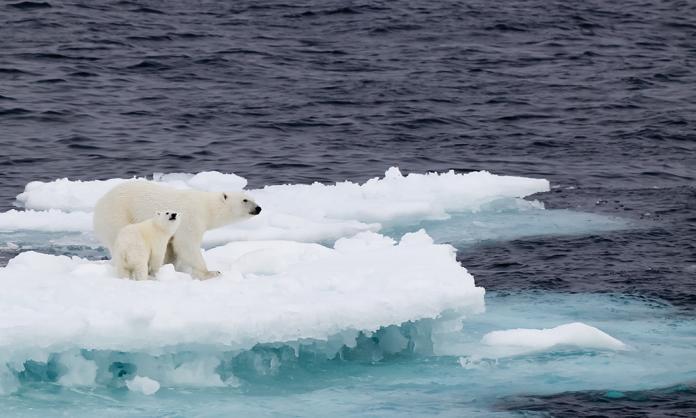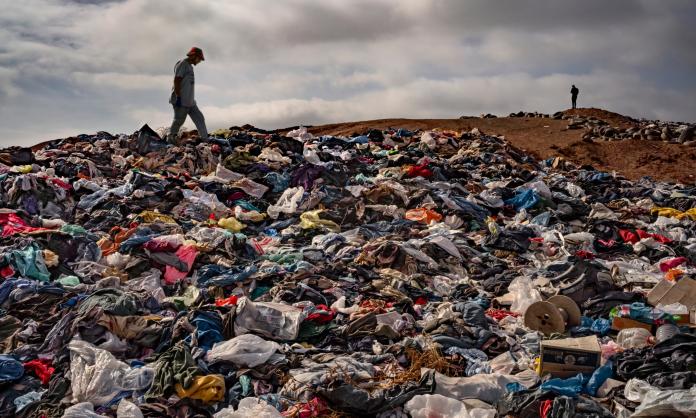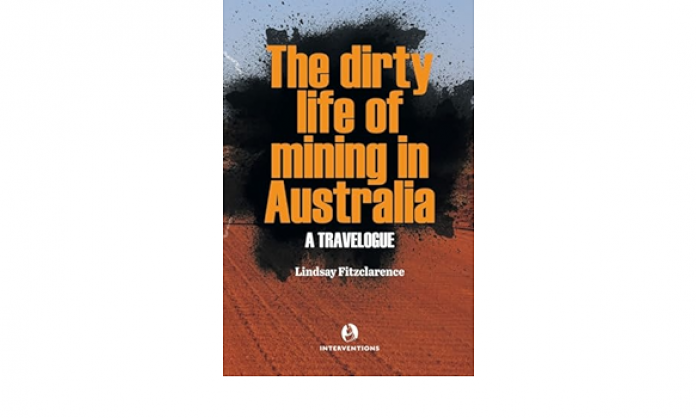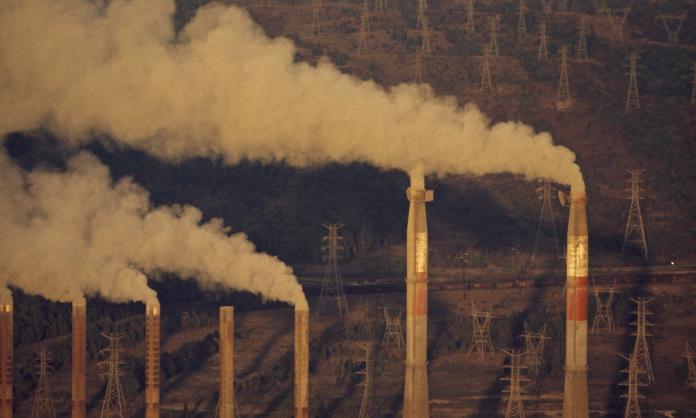The United Nations’ Intergovernmental Panel on Climate Change (IPCC) is widely considered the scientific authority on climate change. It informs government policy, and its predictions about the likely consequences of global warming are frequently invoked by environmental activists to highlight the urgent need for climate action. The IPCC’s contributions to environmentalism are largely positive, but this obscures the fact that even the IPCC is not entirely dedicated to the pursuit of truth, science and environmental protection. Rather, its structure and operation are shaped by the political ambitions of world governments, most of which are determined to delay a transition away from fossil fuels.
Instead of being run by scientists as you might assume, the IPCC is in fact governed by a panel of 195 representatives appointed by governments. The panel elects a bureau of scientific and technical experts, who then appoint and oversee the scientists contributing to the IPCC’s reports within the framework set for them. The panel’s decision making relies on consensus, so it is beholden to countries most committed to the fossil fuel economy, like Australia, Saudi Arabia and the US. It involves hundreds of officials from member countries, whose vested interests determine the body’s activities and procedures, and the scope and structure of its reports.
The IPCC’s various reports are collated into its Summary for Policymakers which is widely read. This is not determined by science or the scientists involved. Instead, government representatives negotiate the summary report’s content line by line.
Recent leaks comparing the final and original drafts of the latest summary report highlight how panel members use their veto powers to undermine the science. In one case, they cut references to the need for gas and coal plants to be shut down within a decade. Leaked documents provided to the BBC hint at who was behind these changes, including “one senior Australian government official rejecting the conclusion that closing coal-fired power plants is necessary”. Other leaks expose the countries behind the removal of references to emissions from the aviation, car and meat industries, as well as the additional emphasis on the potential for carbon capture and storage technologies to clean up fossil fuel emissions.
Despite this, the IPCC is widely respected, and not without reason: thousands of scientists volunteer their time to prepare reports that they hope will be as scientifically rigorous as possible in order to give an honest and accurate picture of the crisis facing our planet. This reflects that the world’s governments are at one level interested in gaining a realistic assessment of the threat posed by climate change, even if they are not willing to act on it.
Climate scientists themselves hope that the truth, meddled with though it might sometimes be, will act as an urgent impetus for action. The 2018 Global Warming of 1.5°C report, for example, is known for its call to halve global emissions by 2030 through “rapid, far-reaching and unprecedented changes in all aspects of society”. This call helped spark the global school climate strike movement.
But climate scientists are increasingly disillusioned with the very governments that run the IPCC. A 2021 survey of IPCC authors in the science journal Nature found that a quarter have taken part in protests, and 60 percent have little faith in government action. Climate scientist Joelle Gergis, in her recent book Humanity’s Moment, shares her experience as one of the dozen Australian lead authors of the latest IPCC report. She describes the harrowing findings, the deep grief shared by colleagues and the frustrations: “Very often the IPCC’s most important messages are lost in translation”.
Frequently, the science simply does not translate into the necessary government policy. In 2015, 195 governments in the Paris Climate Accord committed to limit global warming to 1.5 to 2°C. In response, the IPCC was tasked with achieving the impossible: to determine policy options to limit warming to under 2°C while justifying the continuation of the fossil-fuelled economy. To do this, the IPCC uses computer models called integrated assessment models (IAMs) that couple earth system models with economic models.
IAMs are recognised as the defining measure of government policy’s impact on the climate. But the modellings goal is not to generate policy that minimises capitalism’s impact on the planet. Instead, the IPCC’s fifth assessment report states that the aim is to produce policy options that “minimiz[e] aggregate economic costs”, while assuming “functioning markets and competitive market behavior”. In other words, while the models are constrained by climate ambitions, they prioritise the protection of fossil fuel assets over everything else.
As a result, “The way IAMs are set up, mitigating climate change is always more expensive than inaction”, explain the authors of a 2018 Climate Analytics report. IAMs justify the economic viability of inaction with far-fetched hypothetical scenarios that discount many of the negative impacts of climate change, such as its toll on people, the economy and the biosphere. And they weigh near-term economic costs more heavily than future costs, assuming that technological progress will compensate.
By ignoring climate change’s impact on the economy, for example, IAMs don’t factor in a global economy struggling to adapt infrastructure to withstand an increasingly hostile climate.
By ignoring climate change’s impact on human wellbeing, IAMs don’t factor in the tremendous suffering associated with inaction. The IPCC estimates that by 2030, at 1.5°C, up to 700 million Africans alone could be displaced due to water stress. The international economy will struggle to respond to the escalating humanitarian crises caused by a 1.5°C rise.
By ignoring climate change’s impact on energy demand, IAMs don’t factor in the rising demand for electricity (still partially fuelled by hydrocarbons) as the need for air conditioning skyrockets. In 2018, the International Energy Agency estimated that with 2°C of warming, additional energy demand could be equivalent to the current electricity consumption of the US, Europe and Japan combined.
Because IAMs are structured to favour inaction and the protection of existing industries, governments require a degree of creative accounting to make it seem like their policies could achieve meaningful climate targets. One important example is the concept of carbon offsets. Carbon offsets involve governments factoring into their policy modelling hypothetical technology that may one day remove carbon from the atmosphere, even if such technology doesn’t yet exist. An example of this carbon offsetting technology is Bioenergy with Carbon Capture and Storage (BECCS).
Almost all modelled policy options rest on large-scale employment of BECCS that, based on current technology, would be impossible to implement. The end result is to grossly underestimate the warming that should be expected. For example, in a 2°C pathway outlined in the Global Warming of 1.5°C report, to compensate for no rapid transition, the model requires a carbon drawdown of 12 gigatonnes of CO2 per year by 2100, which is equivalent to about a third of 2021 global emissions.
But a 2018 Nature paper found that if BECCS was to be constrained by the nine planetary boundaries that ensure Earth’s habitability, it could sequester only a mere 0.5 percent of global emissions, nowhere near enough to keep warming to 2°C. Such untenable “solutions” exist in IAM modelling only to keep policymakers and fossil fuel corporations happy: it enables them to make relatively ambitious commitments while maintaining business as usual, along with all the continued climate destruction that involves.
The IPCC’s creative carbon accounting fits so neatly with fossil fuel company interests that Shell’s “vision” of keeping warming below 2°C features as a credible pathway in the Global Warming of 1.5°C report. The large-scale use of fictitious carbon capture and storage technologies in the company's model ensures its fossil fuel reserves are safe future assets.
Overall, the net result of IAMs greenwashing has been to provide scientific backing for government proclamations that an energy transition can occur through gradual change, free-market profiteering and carbon offsetting.
Another way the IPCC’s findings are distorted involves the presentation to the public of the risks of climate change. A range of possible warming outcomes are predicted in the IPCC’s climate modelling, with different levels of probability. The one presented to the public is usually only the most likely, which obscures the various “tail-end” scenarios, which are less likely but pose much more risk.
The IPCC has modelled the probability of levels of warming once the world has adjusted to an atmospheric carbon dioxide concentration of 700ppm, double pre-industrial levels. While the most likely outcome is 3°C, warming of 4.5°C has an 18 percent likelihood. In Climate Shock: The Economic Consequences of a Hotter Planet, two economists have used the IPCC’s numbers to further show that there is a 10 percent probability of warming of at least 6°C.
There is a significant difference between 3 and 6°C of warming. Our Final Warning, a book by Mark Lynas, describes the different impacts of the various possible degrees of warming. At 3°C, he says billions of people in poor nations will reside in climates akin to the hottest parts of the Sahara, including nuclear-armed nations India and Pakistan. At 5°C, for most of the year, regions currently inhabited by a majority of humans will experience wet-bulb temperatures, defined as the threshold in which humans are unable to survive outside. Lynas suggests that a 6°C temperature rise, which has a 10 percent chance of happening, “imperils even the survival of humans as a species”. These tail-end risks demand scrutiny—especially given that current global policies are predicted to reach almost 3°C by 2100, which, once the tail-end risks are taken into account, poses an existential threat to humanity.
Existential tail-end risks are largely excluded from public discourse, and are not factored into IAM modelling and international climate policy. The governments running the IPCC obscure these risks in their blind determination to put fossil fuel profiteering above the habitability of our planet. As scientists’ understanding of tail-end risks has improved over the last two decades, their assessment of the probability of them occurring has tended to increase.
The uncertainty of tail-end risks stems from a lack of scientific clarity about the pace and magnitude of warming generated by a range of earth system processes commonly referred to as “feedbacks” and “tipping points”. Some of these processes are not understood well enough to be included in climate modelling, such as “Arctic permafrost thawing that releases methane and CO2, carbon loss due to intense droughts and fires in the Amazon, and the apparent slowing of dampening feedbacks such as natural carbon sink capacity”, say twelve respected earth system scientists in a paper published this year titled Climate Endgame. This warming, when accounted for in climate models, may further increase the probability of tail-end risks. The earth system scientists argue that these “dangerous surprises” should be researched further and be the subject of the next IPCC report. While governments in charge of the IPCC want to bury these risks for their own political ends, there is an urgent need to learn more about them so they can be better managed.
The environmental movement and climate scientists have a responsibility to expose government distortions of science and to expose the vested interests that underpin such distortions. The misrepresentation of science is adding to a sense of complacency, or misplaced hope, that capitalism can meet the challenge of climate change. This will only bring us closer to an uninhabitable earth. History is full of mass movements leading revolutionary change on a scale that people previously thought impossible. In the coming years and decades, once again, we must make history. We have everything to lose and a planet to win.










